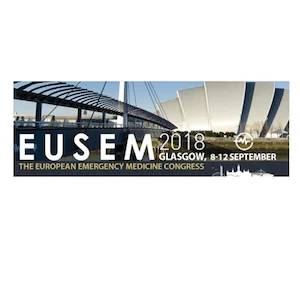Doctors are responsible for reducing antibiotic usage in their hospital, region and country. At the same time, emergency medicine doctors have the responsibility to treat very sick patients - with suspected sepsis and septic shock, efficiently.
Backer Mogensen advised reassessment of suspected septic patients within 4 hours. By this time lab results will be ready, the physician can assess reaction to fluid therapy and imaging exams are ready. This is the time to reconsider the sepsis diagnosis and target the antibiotic strategy.
Annemarie Lassen clinical professor, University of Southern Denmark, Odense, gave three tips to diagnose sepsis vs. viral infection in the ED:
“The time has come to balance the recommendation for early and aggressive antibiotics for all patients with possible sepsis with the diagnostic uncertainty regarding sepsis and the possible harm associated with unnecessary antibiotics. The Surviving Sepsis Campaign and similar quality improvement initiatives have helped improve quality of care by focusing much-needed attention on sepsis and emphasizing the importance of early diagnosis and optimal management. The good that these initiatives have done could be further enhanced by encouraging and permitting clinicians to gather more data to confirm infection in patients without shock before prescribing antibiotics when the evidence for infection is equivocal.”
This was the conundrum addressed by Christian Backer Mogensen, consultant in infectious medicine and emergency medicine at the Hospital of Southern Jutland, and professor in emergency medicine at University of Southern Denmark, speaking at the European Society of Emergency Medicine congress in Glasgow last week.
Backer Mogensen questioned whether early broad-spectrum antibiotics was the new usual care for suspected sepsis. This may lead to overuse of antiobitics, as studied for example by Minderhoud et al. 2017. Denmark has seen increased use of antibiotics and change in spectrum from narrow- to broad-range antibiotics. A single-centre study in the UK by Shallcross et al. (2016) of blood cultures and antibiotic use in patients admitted from the emergency department found that, of 19034 admissions, one-fifth received IV antibiotics, of which half got broad-spectrum, and less than one-third had blood cultures drawn. The authors wrote “…prescribing in the ED sets up the patterns of antimicrobial use across the hospital… those who prescribe in the ED are rarely responsible for reviewing their prescribing decisions."
Uittenbogaard and colleagues (2014) investigated the impact of the diagnostic process on the accuracy of source identification and time to antibiotics in septic emergency department patients. Use of signs and symptoms alone would have led to correct diagnosis in 33% of patients. Diagnostic tests are associated with delayed administration of antibiotics to septic ED patients while increasing the diagnostic accuracy to only 68-85%. They advised that if the infection source cannot be identified by signs and symptoms alone that doctors wait until further tests are done before administering single-dose broad-spectrum antibiotics. Backer Mogensen advised reassessment of suspected septic patients within 4 hours. By this time lab results will be ready, the physician can assess reaction to fluid therapy and imaging exams are ready. This is the time to reconsider the sepsis diagnosis and target the antibiotic strategy.
How to reduce and target antibiotic use in the ED
- Diagnosing sepsis requires considerable clinical experience in addition to qSOFA and lactate
- Antibiotics within 1 hour - At first dose, for most patients with sepsis without shock, he advised broad-spectrum to cover a range of Gram-negative and Gram-positive organisms, e.g. carbapenem, piperacillin/ tazobactam. Dose in high end and make local guidelines.
- Two sets of blood cultures before antibiotics
- Target your first dose of antibiotics based on patient history and clinical examination.
- Local antibiotic guideline mandatory
- Source control and reassessment in the next few hours
- The difficult second dose…or de-escalate?
Sepsis vs viral infection
- Suspect infection
- Treat the patient according to the clinical presentation - is there organ failure, do they need hospitalisation or out of hospital treatment?
- Think:
- why this person
- from this place
- presents with these symptoms
- at this time?
In the same week that EuSEM met in Glasgow, Michael Klompas, Thierry Calandra and Mervyn Singer published in JAMA "Antibiotics for Sepsis—Finding the Equilibrium".
“The time has come to balance the recommendation for early and aggressive antibiotics for all patients with possible sepsis with the diagnostic uncertainty regarding sepsis and the possible harm associated with unnecessary antibiotics. The Surviving Sepsis Campaign and similar quality improvement initiatives have helped improve quality of care by focusing much-needed attention on sepsis and emphasizing the importance of early diagnosis and optimal management. The good that these initiatives have done could be further enhanced by encouraging and permitting clinicians to gather more data to confirm infection in patients without shock before prescribing antibiotics when the evidence for infection is equivocal.”
Latest Articles
Infections, Sepsis, emergency department, antibiotics, European Society of Emergency Medicine, #EuSEM18
Doctors are responsible for reducing antibiotic usage in their hospital, region and country. At the same time, emergency medicine doctors have the responsibility to treat very sick patients - with suspected sepsis and septic shock, efficiently.










